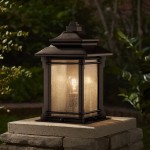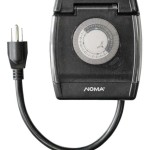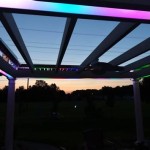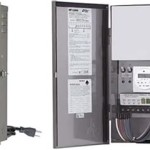Photocell Outdoor Light Sensor: Essential Aspects
Photocell outdoor light sensors are essential devices that enable lights to automatically turn on at dusk and off at dawn. These sensors play a crucial role in energy conservation, security, and convenience, making them a widely used solution in various outdoor lighting applications.
Understanding the essential aspects of photocell outdoor light sensors is key to ensuring optimal performance and long-term satisfaction. This article delves into the critical elements to consider when selecting, installing, and maintaining photocell outdoor light sensors.
Types of Photocell Outdoor Light Sensors
Photocell outdoor light sensors come in various types, each with distinct characteristics and applications:
- Cadmium Sulfide (CdS) Photocells: Affordable and widely used, CdS photocells detect light in the visible and near-infrared spectrum.
- Selenium Photocells: More sensitive than CdS photocells, selenium photocells offer a wider detection range and are less susceptible to temperature variations.
- Silicon Photodiodes: High-performance devices that provide accurate and reliable light detection, making them suitable for demanding applications.
Factors to Consider When Selecting Photocell Outdoor Light Sensors
When selecting photocell outdoor light sensors, consider the following factors:
- Light Detection Range: Ensure the sensor can detect light levels corresponding to dusk and dawn in your location.
- Sensitivity: Higher sensitivity allows the sensor to respond to lower light levels, resulting in earlier activation.
- Durability: Select sensors with robust construction and weather-resistant materials to withstand outdoor conditions.
- Installation Ease: Choose sensors with simple and convenient mounting options to simplify installation.
Proper Installation and Maintenance
Correct installation and maintenance are crucial for optimal performance:
- Placement: Position the sensor facing the direction from which natural light enters to ensure accurate detection.
- Avoid Obstructions: Keep the sensor clear of any obstructions, such as trees or buildings, that may block light.
- Regular Cleaning: Clean the sensor lens periodically to remove dirt and debris that can affect its sensitivity.
- Periodic Inspection: Inspect the sensor regularly for any signs of damage or malfunction to ensure proper operation.
Conclusion
Photocell outdoor light sensors are indispensable devices that enhance convenience, energy efficiency, and security in outdoor lighting applications. By understanding the essential aspects discussed in this article, you can effectively select, install, and maintain photocell outdoor light sensors to optimize their performance and longevity.

Wall Mounted Photocell Sensor Outdoor Lighting

Hardwire Post Eye Light Control With Photocell Automatic Sensor Switch Ledwholers

Photocell Outdoor Light Switch Daylight Dusk Till Dawn Sensor Lightswitch Timer

240v Dusk To Dawn Sensor External Photocell Unit Lumena Lights

Solus Photocell Light Sensor Switch For Hardwire Outdoor Lamp Posts With Ezee Change Plug Dusk To Dawn Control

Light Control Socket With Photocell Sensor Outdoor True Value

Hardwire Post Eye Light Control With Photocell Automatic Sensor Switch Ledwholers

Holme Black Up Down Outdoor Photocell Wall Light Litecraft

How To Add A Light Sensor Outdoor Lanterns The Navage Patch

10a Day Night On Off Light Control Photocell Sensor Switch China Microwave 5 8ghz Radar Detector Made In Com
Related Posts







